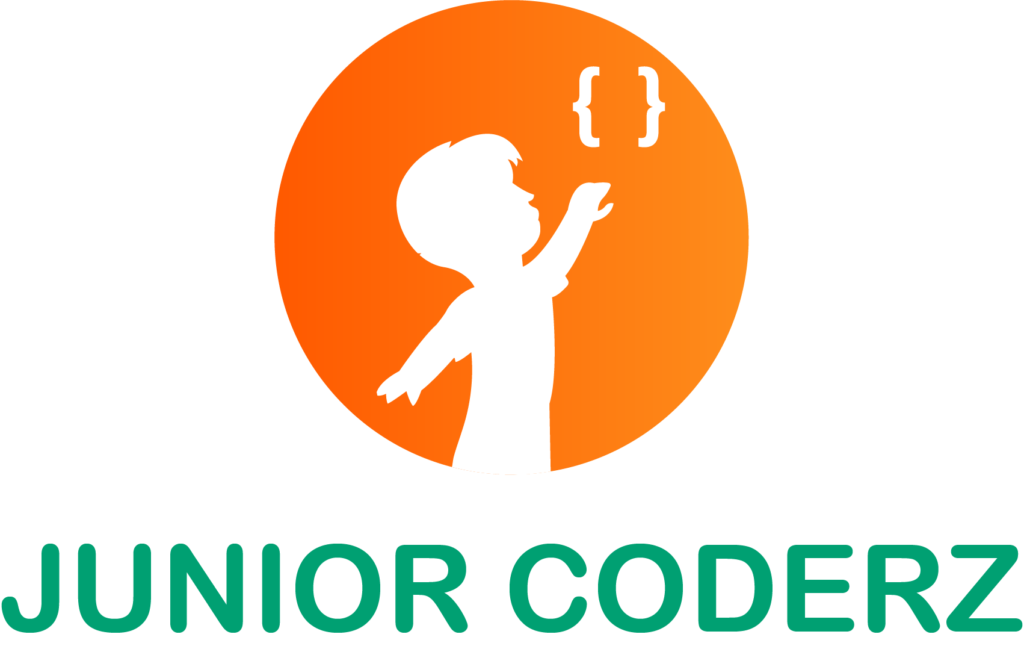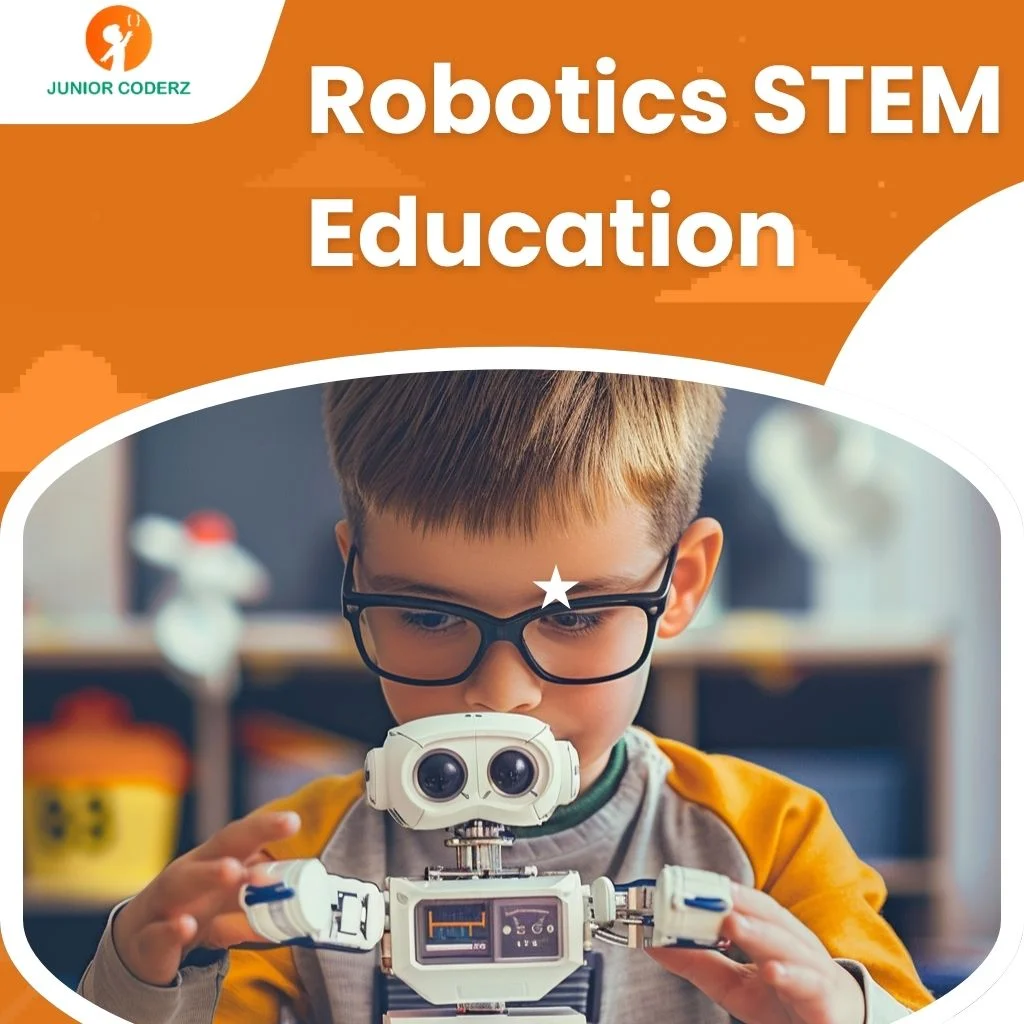Shaping Young Minds with Robotics STEM Education
Imagine a classroom buzzing with excitement as children program tiny robots to navigate mazes, solve puzzles, and even mimic human gestures. This isn’t a glimpse into the distant future it’s happening now. Robotics STEM education is transforming how kids learn by blending science, technology, engineering, and math into hands-on, interactive adventures. Instead of memorizing formulas, students explore real-world challenges, build creative solutions, and discover the thrill of turning code into action
And here’s the exciting part: what if learning in robotics could help unlock your child’s hidden potential? What if a simple robot kit could ignite a lifelong passion for innovation, problem-solving, or engineering? Whether your child is just discovering the joy of building or dreaming of becoming a future tech leader, robotics for kids might be the spark that sets it all in motion. Let’s uncover why robotics in STEM is not just a subject, it’s a revolution in learning.
What Is Robotics STEM Education?
Robotics STEM education is an interdisciplinary approach where children learn to design, build, and code robots while applying principles from science, technology, engineering, and mathematics. Unlike traditional learning, robotics provides students with tangible tools to interact with and learn from, turning abstract concepts into hands-on experiences.
In classrooms or online robotics coding classes, students develop computational thinking, experiment with trial and error, and witness how their ideas physically manifest through mechanical movement all while gaining practical knowledge in coding and engineering.
Why Is Robotics Important in STEM Learning?

Robotics serves as a gateway to understanding complex STEM principles in a simplified, engaging way. It encourages experiential learning, fosters curiosity, and strengthens academic confidence. From elementary schools to advanced robotics labs, students who engage in robotics stem programs show increased retention, creativity, and collaboration skills.
Moreover, robotics stem education is not limited to aspiring engineers. It empowers children with critical life skills—like adaptability, decision-making, and perseverance that transcend the classroom and prepare them for any career path.
Benefits of Robotics STEM Education for Kids
1. Enhanced Critical Thinking and Problem Solving
Robotics stem education is inherently rooted in solving problems. When children build or code a robot, they encounter real-time challenges: motors not running, sensors misreading, code errors. Each issue becomes an opportunity to analyze, troubleshoot, and iterate.
Through trial and error, children learn to:
- Break down large problems into manageable parts.
- Form hypotheses and test them.
- Adapt their approach based on feedback from their robot’s behavior.
This process mirrors the scientific method and strengthens their critical thinking skills, preparing them for academic success and real-world situations.
2. Boosted Creativity and Innovation
While STEM is often associated with logic and precision, robotics offers ample room for imagination. Children aren’t just following instructions, they’re designing solutions, building personalities into robots, and sometimes even inventing new tools.
Whether it’s programming a robot to dance or designing a rover for a mock Martian landscape, kids express their unique ideas through mechanical motion and coding. Robotics helps them understand that creativity and technology go hand in hand.
This is where coding and robotics for kids becomes an art as much as it is a science.
3. Hands-On Engagement for Better Learning Retention
Children learn best by doing and robots make learning tactile. Instead of memorizing physics concepts or math formulas, they get to apply those principles by creating functioning robots. The joy of touching, assembling, and controlling their own machines keeps them engaged far longer than traditional methods.
According to studies, kinesthetic learning improves memory, attention span, and understanding. Kids are more likely to retain what they learn when it’s connected to a physical experience.
Robotics for kids transforms passive classrooms into interactive learning labs, making education deeply immersive.
4. Confidence Building Through Achievement
Watching a robot move because of your code is empowering. Even small victories like getting a robot to follow a line or speak instill a sense of accomplishment in children. These “aha!” moments build self-confidence, especially in students who may struggle with traditional academic subjects.
With every obstacle overcome, children believe more in their ability to learn, adapt, and lead. This emotional growth is just as valuable as academic progress and encourages children to take on challenges with enthusiasm.
When students participate in a robotics coding class, they experience guided success, boosting their sense of capability and independence.
5. Improved Teamwork and Leadership Skills
Most robotics projects encourage group work, mimicking the collaboration that happens in professional STEM environments. In team-based learning, kids naturally take on different roles: leader, coder, designer, tester each contributing to the project’s success.
Through teamwork, they learn:
- Communication and compromise
- Leadership and delegation
- Conflict resolution
- Shared accountability
Incorporating stem and robotics into group activities helps children develop empathy and emotional intelligence, preparing them to thrive in future academic and workplace teams.
6. Integration of Multiple Disciplines
Robotics STEM education is the ultimate interdisciplinary field. A single project might involve:
- Science (understanding sensors and energy)
- Technology (using apps or computer interfaces)
- Engineering (constructing and calibrating robots)
- Math (calculating angles, timing, distances)
This holistic learning approach helps children see connections between subjects, making education feel more cohesive and purposeful. It also allows them to identify their strengths be it coding, design, or logical thinking so they can explore them further.
7. Exposure to Future-Ready Skills
The world is moving toward automation, AI, and machine learning. By learning robotics early, children develop fluency in the technologies of the future. Even if they don’t pursue a tech career, understanding how machines work will be essential in almost every field.
Robotics introduces children to:
- Logical programming and algorithmic thinking
- Mechanical engineering principles
- Data analysis and optimization
- Digital communication and control systems
With stem robots for kids becoming more accessible, this future-ready learning is no longer limited to tech labs; it’s available in classrooms and living rooms alike.
Popular STEM Robots for Kids
Here are some of the most loved educational robots that blend learning with play:
- LEGO Mindstorms – Engineering meets coding.
- Dash & Dot – Great for younger learners with voice and motion sensors.
- Ozobot – Ideal for learning in robotics through color-coded commands.
- mBot – Perfect for robotics stem beginners and project-based learning.
- Sphero – Engaging, app-controlled robotic ball that teaches physics and coding.
These tools aren’t just toys—they’re gateways to advanced STEM concepts.
How Robotics Enhances Problem-Solving and Creativity
Children often approach problems in linear ways until they meet a robot. Robotics demands flexible thinking, resilience, and adaptation. When a robot doesn’t behave as expected, kids must reassess their code, debug errors, and redesign strategies. This cyclical process mirrors real-world problem-solving.
Moreover, children begin expressing themselves not just through words or art but through design and logic. The joy of seeing their robot “come alive” inspires pride and fosters ownership over their learning.
Coding and Robotics for Kids: A Powerful Duo
When robotics and coding combine, the results are magical. Kids learn how to give instructions, create algorithms, and control outcomes all while building a deeper understanding of logic and computation.
Robotics coding classes make this process structured and goal-oriented. Many platforms offer age-based progressions, ensuring that learning remains fun and challenging at every stage.
Robotics Coding Class vs. Self-Guided Learning
| Feature | Robotics Coding Class | Self-Guided Learning |
| Structured Curriculum | ✔️ Guided learning path | ❌ May lack progression |
| Expert Support | ✔️ Access to instructors | ❌ Learner must troubleshoot alone |
| Collaboration Opportunities | ✔️ Peer learning, team projects | ❌ Often solitary |
| Flexibility | ✔️ Online or in-person options | ✔️ Learn at your own pace |
While both have merit, structured robotics stem education ensures children build a solid foundation and stay motivated.
How to Start: Tools, Kits, and Resources
Getting started with robotics doesn’t require a tech lab. Here’s what parents and educators need:
- Starter Kits (Ozobot, mBot, LEGO Spike)
- Online Platforms (JuniorCoderz, Tynker, Code.org)
- Robotics Clubs or Camps
- Parent Guides & Activity Worksheets
- YouTube DIY Tutorials
The key is consistent exposure and encouragement. Don’t just observe and engage with your child as they learn.
Real-Life Examples: Schools & Programs Using STEM Robots
- Vale View School: Students use robotics in project-based learning, competing in Robocup competitions.
- US Classrooms: Programs like Sphero and Dash are integrated into science labs.
- JuniorCoderz.com: Offers interactive online courses for kids to build and code their own robots, progressing from beginner to advanced levels
These case studies prove one thing robotics is more than a trend; it’s a teaching evolution.
Final Thoughts: A Brighter Future Through STEM and Robotics
Children today are tomorrow’s creators, leaders, and change-makers. With robotics stem education, we aren’t just teaching tech skills we’re cultivating curiosity, resilience, and the joy of discovery. Whether it’s in school, at home, or through a robotics coding class, your child’s journey into STEM begins with that first spark of wonder.
Are you ready to empower your child’s learning through robotics?
Visit JuniorCoderz.com and explore our dynamic robotics and coding programs tailored for young innovators.
FAQs
Q. At what age can my child start learning robotics?
Children as young as 5 can begin with simple kits like Dash or Ozobot designed for early learners.
Q. Do I need a background in programming to help my child?
Not at all! Many kits and courses are beginner-friendly and include tutorials for both kids and parents.
Q. What are the best robots for beginners?
Popular choices include mBot, Dash & Dot, and LEGO Boost, all of which support hands-on and visual learning.
Q. How does robotics improve STEM learning?
It turns abstract STEM concepts into real-world applications, improving comprehension, problem-solving, and creativity.
Q. Can robotics classes be taken online?
Yes, platforms like JuniorCoderz offer structured online robotics and coding classes for various age groups.

